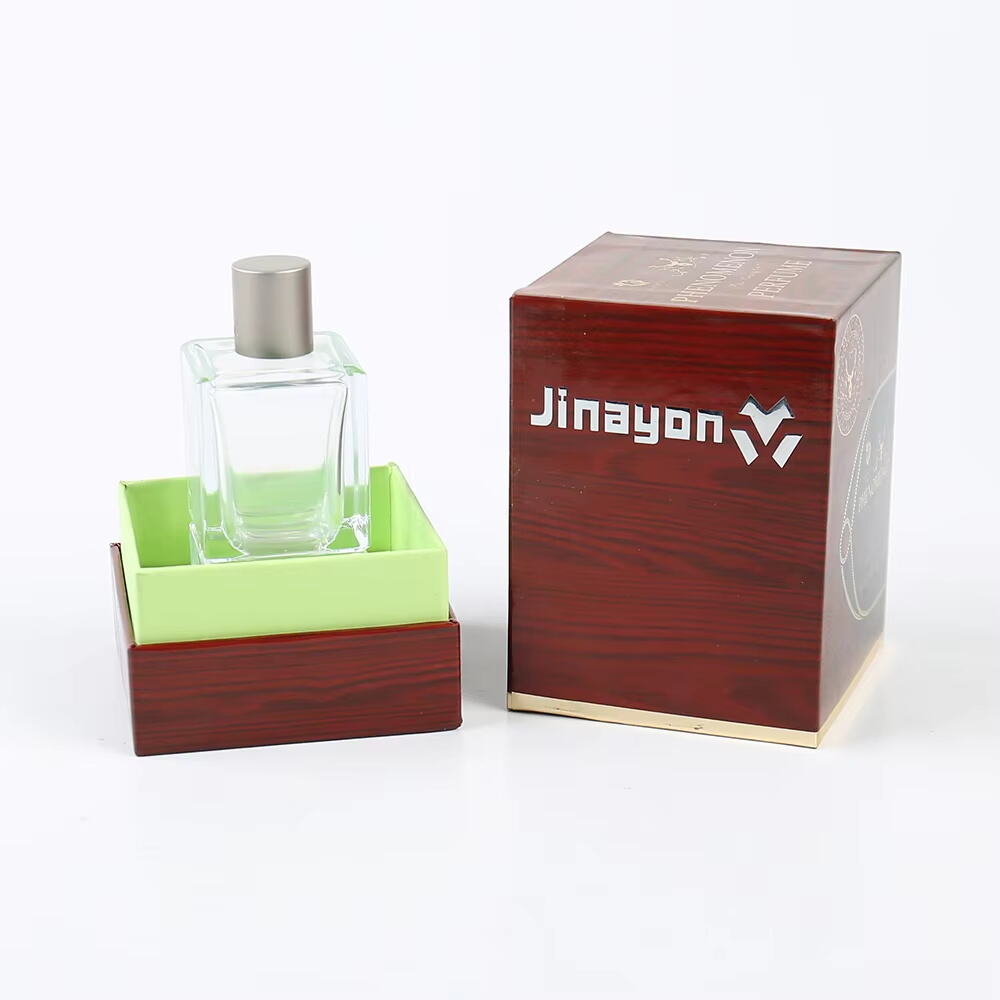Важността на бюджетирането за персонализирани твърди кутии
Задаването на ясен бюджет е от съществено значение за успеха на стратегиите за упаковка в всяко предприятие, което използва персонализирани твърди кутии . То гарантира, че ресурсите се разпределят ефективно и подобрява способността за финансови прогнози. Добре определен бюджет помага при по-точното предвиждане на разходите, което подкрепя стратегическите процеси на вземане на решения, свързани с клиентското задоволство и оперативната ефективност.
Разходите за упаковка влияят значително върху различни аспекти на бизнеса, включително оперативната ефективност и клиентското задоволство, като така оказват влияние върху общия крайна печалба. Правилното бюджетиране на разходите за упаковка може да доведе до значителни спестявания, които могат да бъдат насочени към други стратегически области, като маркетинг или развитие на продукти. Чрез оптимизирането на тези спестявания, предприятията могат да подобрят своя конкурентен превъзходството в пазар, където упаковката играе ключова роля в брендiranето и потребителското възприятие.
Инвестирането в качествено упаковяване през добре планиран бюджет има дългосрочни предимства. То може да намали бъдещите рискове и да избягва проблемите, свързани с лошо управляеми бюджети, като например увеличени разходи поради неуспехи или повреди на упаковката. Лошо управляемите бюджети за упаковка често водят до повторни работи и допълнителни разходи, които биха могли да бъдат избегнати с по-висококачествени инвестиции от началото. Следователно, мисленето и погледът напред при планирането на бюджета служат като стратегически инструмент за намаляване на непредвидени разходи и подкрепяне на целостта на марката, което крайно късно помага за продължителния растеж на бизнеса.
Разходи за материали за персонализирани твърди кутии
При оценката на материалните разходи за персонализирани твърди кутии има няколко фактора, които играят роля, включително пазарни тенденции, колебания в ланцета на доставки и конкретния вид материал, използван. Например, цената на твърдата кутия се влияе значително от избрания материал, като хартия, картон или тъкан. Премиум материали като рельефна или металическа хартия добавят не само роскошна присъста, но и подобряват възприемането на марката. Статистиките показват, че 70% от потребителите казват, че дизайна на упаковката влияе върху техните решения за покупка, което подчертава въздействието на избора на материал върху привличането на потребителя.
Повече от това, индустрията създава растящ тренд към устойчивост, който принуждава компании да избират екологично чисти, но и экономически ефективни материали за своите твърди кутии. Тези избори не компрометират качеството, а посочват марката като отговорна към околната среда. Устойчивите материали, като再造 картон и биоразлагаеми покрития, не само са по-добри за околната среда, но често предлагат конкурентни цени, което ги прави привлекателни за бизнесите, които искат да намалат своята углеродна следа без да надхвърлят бюджета си. Докато компаниите се адаптират към този тренд, е важно да балансирали разходите с устойчивите практики, за да постигнат дългосрочни предимства.
Разходи за дизайн и персонализация
Създаването на персонални дизайни за твърди кутии включва няколко ключови разхода. Първата група от разходите включва първоначалните такси за проектиране, когато работите с дизайни на упаковките, за да преведете брандова визията си в конкретна упаковка. След това цифровите проби ви позволяват да визуализирате дизайна преди да се започне производството. Накрая, реалните разходи за производство покриват процеса на фабрикация, който превръща вашата персонализирана упаковка в реалност. Тези стъпки гарантират, че упаковката ви има желания ефект и съответства на индустриалните стандарти.
Включването на функции като уникални цветове и финишни обработки може значително да добави към общия разход, но може също така да бъде критично за предоставянето на запомняща се упаковка. Например, марки като Tiffany & Co. и Apple са известни поради своите отличителни упаковки, които значително подобряват техния бранд. Използването на ярки цветове или матови финишни обработки може да направи упаковката не само съдове, но и важен маркетингов инструмент, който привлича клиентите и добавя стойност към продукта самия.
Елементите за брендове, като логотипи, ембосаж и специални печатни техники, също водят до допълнителни разходи, но играят уникална роля при диференциацията на продукта. Въвеждането на ембосаж или логотип от фолирана запечатка Продукти ви прави да се изразничавате в конкурентния пазар и създават премиум впечатление, което резонира с потребителите. Тези елементи са критични за задвижването на брендова диференциация, с компании, които влагат в тях, за да постигнат конкурентно предимство и да насърчават лоялността към бренда.
Как количеството и размерът влияят върху цената на персонализираните ви твърди кутии
Корелацията между обема на поръчката и ценирането е фундаментален фактор в економиката на упаковките. Купуването в голяма мащаб често принася значителни спестявания благодарение на отстъпки за обем и економии от мащаба. Когато предприятията правят по-големи поръчки, те се възползват от намалени разходи за единица, резултат от разпространяването на фиксирани разходи върху по-голямо количество. Например, установяването на печатни таблици и машини изисква големи предварителни разходи, но тези се амортизират през целия производствен цикъл, правейки всяка единица по-евтина, когато обемите нарастват.
Повече от това, размерът на персонализираните твърди кутии също влияе върху цената, предимно чрез материални изисквания и времеви рамки за производство. По-големите кутии обикновено изискват повече материали, което води до по-високи разходи. Допълнително, необичайните размери могат да причинят увеличение на загубите от материал или по-дълги срокове за производство, особено ако изискват специализирани пресечки или техники за монтаж. За да се минимизират тези разходи, предприятията могат да оптимизират размерите на кутиите, като гарантират, че размерите съвпадат с продуктните спецификации колкото е възможно най-точно, намалявайки излишното използване на материал и загубеното пространство.
Разбирането как количеството и размерът влияят върху цената на персонализираните твърди кутии позволява на бизнесите да планират стратегично инвестициите си в упаковката и по този начин да допринесат за по-ефективни операции с по-ниски разходи. Комплексен анализ на обемите на поръчките и размерите на кутиите може да позволи по-добро вземане на решения, гарантирайки баланс между функционалността и достъпността на упаковките.
Производствени и транспортни такси за персонализирани твърди кутии
Разбирането на разходите, свързани с персонализираните твърди кутии, включва изследване на работната сила, производствени и транспортни такси. Разходите за работна сила покриват ръчното усилие при проектирането и монтажа, докато производствените разходи включват материали и производствени инструменти. Транспортните такси зависят от логистиката и разстоянията. Например, проучване, детайлиращо разбивката на разходите за малко предприятие, производещо твърди кутии, показа, че работната сила и материалите съставляват 70% от общите разходи, докато транспортирането и логистиката съставлят останалата част. Това подчертава необходимостта бизнесите да планират внимателно и да управляват тези елементи, за да поддържат прибылност.
Поред това, разбирането на предварителните срокове и техния ефект върху таксите за превоз е от съществено значение. Знанието за вашите срокове за производство може да предотврати скъпите такси за ускорен превоз. Дълги предварителни срокове позволяват използването на по-евтини методи за превоз, което намалява разходите значително. Например, избягването на поръчки в последния момент може да помогне да се избегнат надменили costове. Следователно, поддържането на точни производствени графици гарантира гладки операции и икономически ефективност. Методичното планиране и комуникацията с партньорите за превоз са ключови за използването на тези спестявания.
Освен това, предприятията трябва да бъдат внимателни към скритите такси, които могат да възникнат по време на производството и доставката. Тези такси могат да включват неочаквани административни такси, разходи за обработка или таможни такси при международната доставка. За да се избегнат неприятни изненади, е важно да се получават подробни оферти от няколко доставчика и да се вземат предвид всички потенциални разходи. Детайлното сравнение на офертите помага да се разкрият тези скрити разходи, позволявайки по-точно бюджетиране и финансов планинг. Чрез разбирането на пълната структура на таксите, бизнесите могат да избегнат непредвидени разходи и по-добре да управляват бюджета си за упаковките.
Заключение: Общите разходи като ключов фактор за ясен бюджет
В заключение, разглеждането на всички аспекти на персонализираното... Ригидна кутия Разходите са от ключово значение за създаването на точен бюджет. Предприятията трябва да вземат предвид разходите от материали и дизайн до всяка фаза на производството и доставката. Чрез подробно разбиране на тези елементи, компании могат не само да преговарят по-добри цени, но също така да гарантират по-точен общ бюджет през фазите на планирането. Такова всеобхватно разбиране е важно за взимане на обосновани решения и оптимизиране на разпределението на ресурсите ефективно.
Често задавани въпроси
Защо бюджетирането е важно за персонализирани твърди кутии?
Бюджетирането осигурява ефикасно разпределение на ресурсите, точна прогноза на разходите и подобрява оперативната ефективност, което крайно време поддържа удовлетвореността на клиентите и долната линия на бизнеса.
Как влияят изборите на материал върху цените на персонализираните твърди кутии?
Цената е влияна от използваните материали, като хартия, картон или ткани. Устойчивите материали може да предлагат конкурентни цени, което помага да се намали углеродният след, докато се поддържа качеството.
Каква е важността на разходите за дизайн и персонализация при твърди кутии?
Разходите за дизайн и персонализация включват такси за дизайн, цифрови доказателства и производствени процеси. Тези разходи са решаващи за създаването на упаковка, която ефективно влияе върху потребителското восприятие и маркетинговите усилия.
Как обемът на поръчката и размерът на кутията влияят на цени?
По-големите обеми на поръчки могат да предизвикат значителни спестявания поради економически мащаби. Размерът на кутията влияе върху нуждите от материал и производствените срокове, което променя общите разходи.
Какво трябва да вземат предвид бизнесите относно производствените и разходите за доставка?
Бизнесите трябва да имат предвид разходите за работа и производство, както и логистиката. Разбирането на предварителните срокове може да помогне да се изберат стойностно оправдани опции за доставка, избягвайки скрити такси и непредвидени разходи.
Съдържание
- Важността на бюджетирането за персонализирани твърди кутии
- Разходи за материали за персонализирани твърди кутии
- Разходи за дизайн и персонализация
- Как количеството и размерът влияят върху цената на персонализираните ви твърди кутии
- Производствени и транспортни такси за персонализирани твърди кутии
- Заключение: Общите разходи като ключов фактор за ясен бюджет
-
Често задавани въпроси
- Защо бюджетирането е важно за персонализирани твърди кутии?
- Как влияят изборите на материал върху цените на персонализираните твърди кутии?
- Каква е важността на разходите за дизайн и персонализация при твърди кутии?
- Как обемът на поръчката и размерът на кутията влияят на цени?
- Какво трябва да вземат предвид бизнесите относно производствените и разходите за доставка?
 EN
EN
 AR
AR
 BG
BG
 DA
DA
 NL
NL
 FI
FI
 FR
FR
 DE
DE
 IT
IT
 JA
JA
 KO
KO
 NO
NO
 PT
PT
 RU
RU
 ES
ES
 IW
IW
 TH
TH
 MS
MS
 HY
HY




